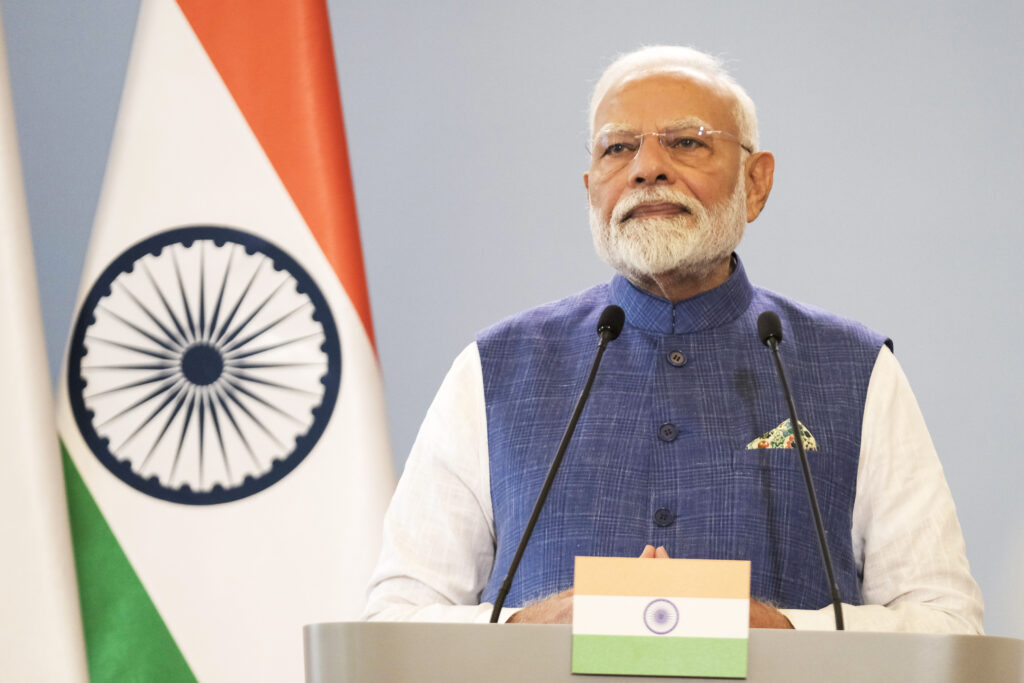Analyses / Asia-Pacific
23 July 2025
How can the evolution of Indian foreign policy in the crisis with Pakistan over Kashmir be analysed?

On 10 May, the ceasefire between India and Pakistan was deemed a “thaw” between the two countries. It brought an end to several days of military clashes initiated by India as part of Operation Sindoor. The silencing of weapons must indeed be welcomed, as too many civilians lost their lives on both sides of the border during the strikes conducted by New Delhi and Islamabad. However, this de-escalation is in fact a façade: not a single cause of tension has been resolved. On the contrary, unprecedented elements in this Indo-Pakistani confrontation suggest that the grounds for a future regional conflict persist, or have even intensified.
First of all, and contrary to the timeline, Donald Trump’s announcement of the end of hostilities was seen as an affront in India. While Islamabad has strived to internationalise the conflict since 1948, New Delhi has instead tended to view it as a bilateral dispute, or even a domestic issue. In practice, third powers did activate diplomatic channels to influence one side or the other, but this was seldom made public in order not to place either government in a difficult position. Centred around the Kashmir region, the dispute between the two countries is consubstantial with the creation of the two independent states. Consequently, regardless of the governments in office, it is perceived as a matter of national territorial integrity: rejection of the other side fuels national construction. Since 2014, this has been compounded in India by a xenophobic dimension and a hatred of Muslims following the rise to power of the Bharatiya Janata Party (BJP, Indian People’s Party). Added to this is the fact that, for the first time, a foreign head of state announcing the ceasefire and claiming credit for it is perceived as a humiliating interference in Indian domestic affairs. This comes at an already complicated time for Narendra Modi: in February, he had inserted himself into Washington in the hope of renegotiating customs tariffs, knowing that since taking office the Prime Minister has boasted of India’s reclaimed sovereignty. Received without honours and returning empty-handed, the visit was described as a humiliation by his electoral base. Now inflamed by ten years of sovereignist rhetoric, that base is calling for revenge against Pakistan and is using the incident to target Indian Muslims, with Kashmiris as a priority.
Indeed, another unprecedented dimension of the recent conflict ties in with Indian medium-term dynamics: the Hinduisation policy of society and the state at the heart of Narendra Modi’s project. This concerns all Indian Muslims. However, in Kashmir, a region with a majority Muslim population, it is logically more pronounced. In 1950, Kashmir’s special status recognised its distinct identity: only the seven million Kashmiris could access land ownership in order to preserve demographic balance and promote the local development of this territory, rich in minerals and hydroelectricity, as well as a national tourism hotspot. The violation of this provision triggered an uprising in 1989, to which the state responded by imposing a draconian military law in 1990. Still in effect today, it has been the source of all ongoing popular mobilisations, whether violent or not, in the valley for the past 35 years. New Delhi systematically suppresses them with force. To this historically security- and resource-driven management, Narendra Modi has added an identity-based approach. In 2019, the special status was revoked under the declared aim of restoring “security” and “normality” to the valley. In the eyes of Kashmiris, this is in fact intended, firstly, to alter the region’s demographics to render its Muslim component invisible, and secondly, to deprive them of economic resources. This decision is therefore perceived as an existential threat, especially as it is accompanied by an official push for tourism—particularly to Hindu religious sites—and settlement for economic development. Over the past six years, nearly 85,000 Indians have settled in Kashmir and purchased land. This is in addition to 3.5 million tourists in 2024—equivalent to half the resident population. It is in this context that the 22 April attack took place: it is the crux of the matter. Yet this dimension was immediately downplayed by Narendra Modi, who accused Pakistan of “terrorism”. This argument made it possible to seal off the valley and, once again, crush the population: unlawful house demolitions, mass arrests, and press closures. The same occurred in the rest of India, where the few voices supporting the Kashmiris were criminalised. No solution has thus been offered to the Kashmiris. Whether or not they are being exploited by Pakistan, the drivers of rejection of an Indian state perceived as colonial—a breeding ground for local violence—are more acute than ever.
Lastly, the very manner in which New Delhi waged this conflict illustrates the distortion of international law in favour of sheer force. Without ever substantiating Pakistan’s involvement in the attack, India immediately accused it of being the instigator and launched the first strikes. Narendra Modi also suspended—illegally—the Indus Waters Treaty (IWT), signed in 1960 to allocate the rivers between the two countries, and which had been upheld even during previous wars. To this day, the treaty remains “suspended” by India, without any legal basis, as the IWT contains no provision for suspension. India is thus endangering millions of civilians by pre-empting a vital resource in the context of a military confrontation, which seems to run counter to international humanitarian law. More seriously still, this act sets a dangerous precedent in a region where 30 to 40% of humanity relies on rivers originating from the Tibetan Plateau, but which is highly vulnerable to climate disruption. China and India are now both attempting to seize control of water resources. In a Trump-like fashion, New Delhi’s military escalation may be seen as the continuation of trade by other means, since India and Pakistan are in conflict over this issue, and the former has been seeking to renegotiate the IWT to its advantage for several years.
The three points above therefore illustrate a notable rupture: the state that claims to be the only democracy in the region—and is recognised as such by Western governments—was the aggressor and violator of international law. In light of the national policies pursued by Narendra Modi since 2014, such a resort to force is hardly surprising. Violations of the rule of law and fundamental freedoms are multiplying and have been reported by independent observers such as the United Nations and Human Rights Watch. The Swedish institute V-Dem even considers that India is no longer a democracy but an “electoral autocracy”. One can therefore interpret India’s recent attitude towards its neighbour as an exportation—into the diplomatic arena—of the authoritarianism and xenophobia characterising Narendra Modi’s Hindutva-driven policies and his government. Despite these facts, the dichotomy prevailing among most Western leaders—classifying and freezing states according to regime type, authoritarian versus democratic, with no regard for the long processes of transition between systems—appears to have hampered the possibility of criticism regarding New Delhi’s belligerent stance. Yet both parties are nuclear powers: their tensions concern, at a minimum, regional—if not global—security.
That India should be the one to instigate military escalation is therefore particularly striking, especially as it forms part of a broader trend of challenging the international system governed by law and born out of the post-war order—even on the part of states supposedly entrusted with its defence. The statement by Foreign Minister Subrahmanyam Jaishankar is unequivocal in this regard: “we will not be told how to behave by rules the West itself ignores when its own interests are at stake.”

